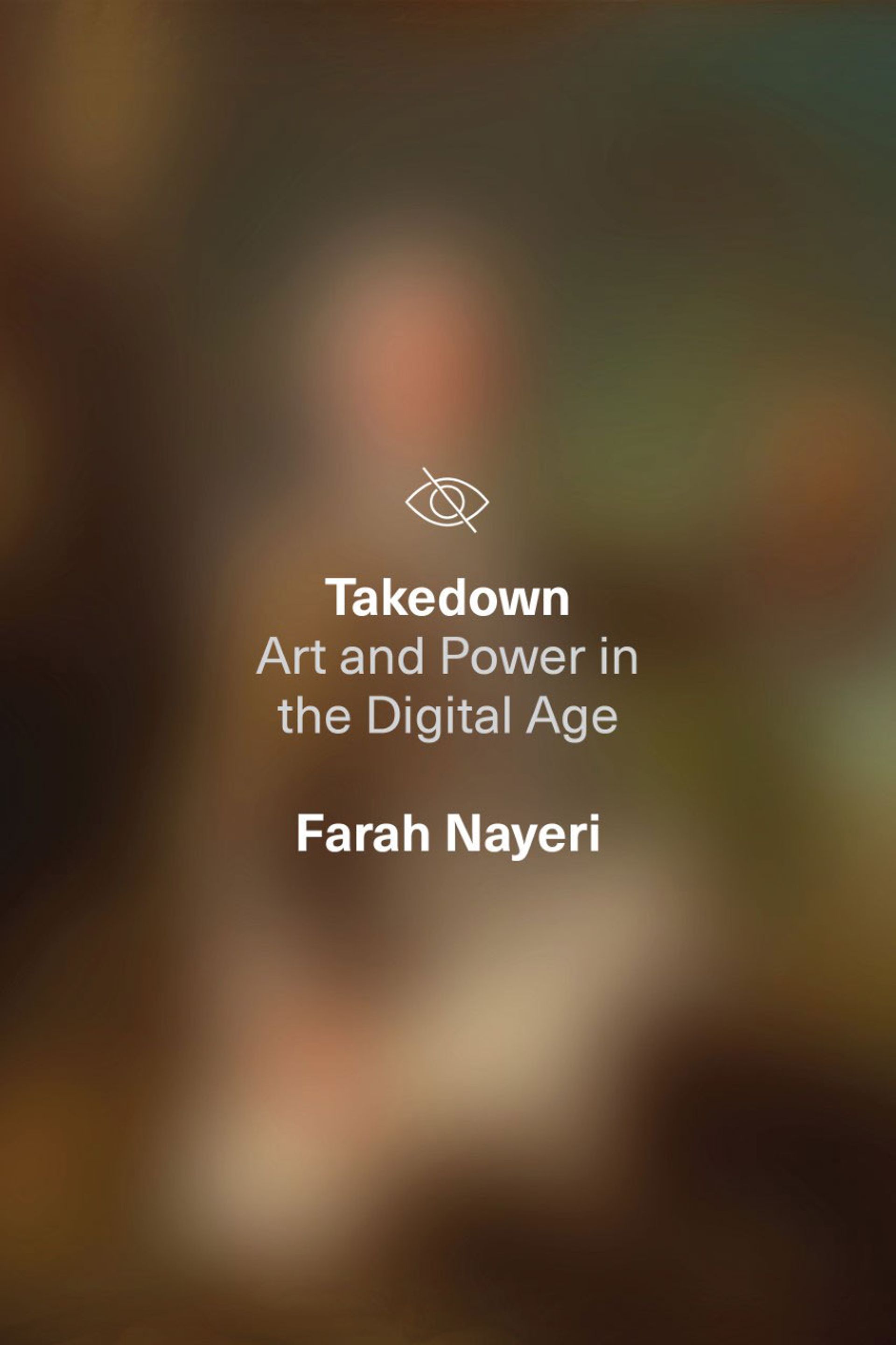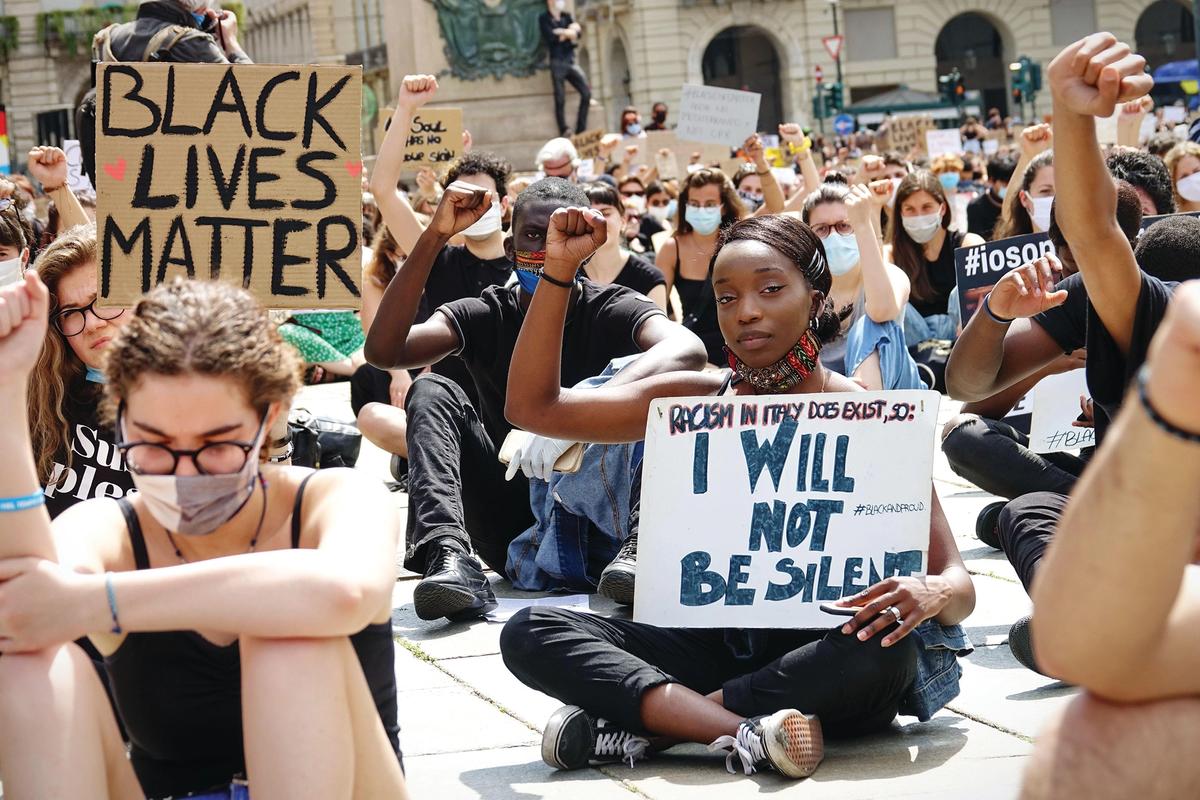In the wake of a rising “war on woke” and debates around “cancel culture”, a new book by the Iranian-born writer Farah Nayeri examines how the art world has been transformed in recent years through seismic events such as Black Lives Matter protests erupting around the world. Takedown: Art and Power in the Digital Age shines a light on “this new age of art and activism”, according to the author. Underpinned by social media, “citizen-activists” are able to judge the efforts of artists, curators, galleries, museums, auction houses and art fairs with a “new raft of egalitarian and ethical yardsticks”, Nayeri says.
However, this is nothing new, with Nayeri explaining that her new book “is an analysis of how politics and art have been intertwined since the beginning of time, and how people in power have always sought to control and censor artists”. She adds: “For centuries, those people were popes, kings, and dictators. Now that liberal democracy is the dominant political system in the West, power is in the hands of the citizens—voters who cast their ballots and determine the direction of politics.”
They are making their voices heard, and pushing the art world to be more democratic and representative of themFarah Nayeri
Those citizens are also having an impact on the direction of travel in the contemporary art and museum world, she says. “Using the instant amplifier that is social media, they are making their voices heard, and pushing the art world to be more democratic and representative of them. Takedown illustrates this phenomenon through thematic chapters on topics such as gender, sexuality, race and money.”
Nayeri explains how the 2019 Gauguin Portraits show at the National Gallery in London was a catalyst for the book. She wrote an article about the exhibition for the New York Times headlined “Is It Time Gauguin Got Cancelled?”, which examined how the French artist was being reassessed in the era of #MeToo. She expected the National Gallery to dodge the matter of Gauguin’s predilection for underage girls, as other museums had done.
Instead, the issue was overtly broached. “The wall text in the entrance to the exhibition said Gauguin had ‘repeatedly entered into sexual relations with young girls, marrying two of them and fathering children’, and that he had ‘undoubtedly exploited his position as a privileged Westerner to make the most of the sexual freedoms available to him’,” Nayeri says. “Several of the curators and art historians I spoke to for the piece said it was time to show not just Gauguin the artist, but Gauguin the man—and to ‘bring out all the dirty stuff’.”

Farah Nayeri Photo: Suzanne Plunkett
A chapter titled “Still No Seat at the Big Table” homes in on an enduring characteristic of Western art history: the invisibility of Black artists. Nayeri dissects how “the erasure of non-white people from art history” prevailed, citing a student-led 2016 survey conducted by Guttman Community College at The City University of New York, which showed that, of 1,300 artists represented by New York’s top 45 commercial galleries, 80.5% were white, while only 8.8% were Black.
Until well into the 21st century, white men continued to rule the roost, crowding out women and non-white artists almost entirely, Nayeri says. But the socio-political landscape shifted dramatically, following the murder of George Floyd in May 2020. Nayeri quotes the New York Times art critic Holland Cotter, who wrote that major art museums “offered the awkward spectacle of suddenly-woke institutions competitively jostling to assert their ‘solidarity’ with Black Lives Matter. And the gestures have felt both self-aggrandising and too little too late”.
Nayeri also tackles the basic contradiction at the heart of this new citizen-led revolution, discussing how a round-the-clock digital democracy is empowering, but can also be paralysing, prompting virtual witch-hunts when, for instance, anonymous voices on social media unfairly attack a museum, gallery or art-world figure.
“Audiences have every right to criticise and protest against art. But when their protest becomes threatening or violent, they end up being exclusionary and undemocratic themselves, and generating a climate of fear that can lead museums to censor, postpone or cancel exhibitions and programmes. That kind of climate is what one would expect in an autocracy, not in a Western democracy,” she says.
Therein lies the dilemma with a 21st-century Western society that is paradoxically more open than ever, but arguably repressive as established bodies are “cancelled” by newer, possibly younger, voices. So where does the art world go from here? Institutions and individuals now need to be aware of “equality, ethics and ecology”, Nayeri says. “Given the way the world is going, museums, galleries and art-world professionals who ignore those three ‘E’s do so at their peril. Modern-day audiences have come to expect certain values from institutions and spaces that show art.”
However, this may be a difficult balance to strike, she argues. If ecology means avoiding air travel and shipping works only by land and sea, we might as well say goodbye to major artist retrospectives, and to international art fairs, Nayeri says. “If ethics means accepting cash only from high-net-worth individuals whose investments are morally pure, the pool of donors shrinks pretty dramatically. And if museums stop putting on exhibitions of dead white males, there can be no more Picasso, Matisse or Rothko shows. How is that a desirable prospect? Righting the wrongs of the past is necessary. It just needs to be done sensibly.”

Takedown: Art and Power in the Digital Age by Farah Nayeri
• Takedown: Art and Power in the Digital Age, Farah Nayeri, Astra House, 272pp, $28 (hb)



